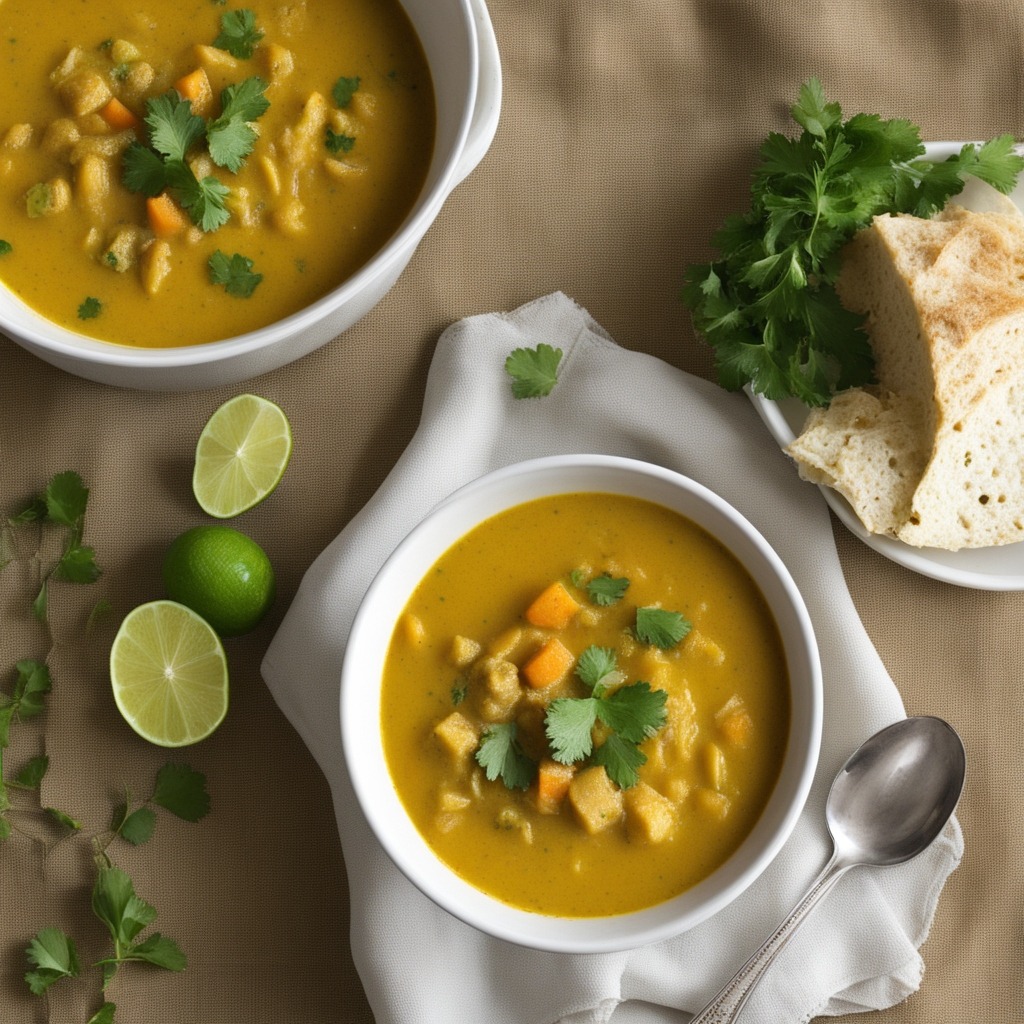Mulligatawny soup, a dish with roots tracing back to the Indian subcontinent, has evolved into a beloved culinary creation celebrated for its rich flavors and cultural significance. This fusion soup, which blends Indian spices with British culinary traditions, offers a tantalizing journey through history and taste.

Origins and Evolution
The name “Mulligatawny” is derived from the Tamil words “milagu” (pepper) and “tanni” (water), reflecting its South Indian origins as a peppery broth. Historically, Mulligatawny was a simple soup consisting of lentils, peppers, and tamarind, enjoyed for its warmth and nourishment.
During the British colonial era in India, Mulligatawny underwent a transformation as British expatriates adapted it to suit their palates. The addition of meat, such as chicken or lamb, along with cream and various spices, reflected British tastes while incorporating Indian influences. This melding of culinary traditions gave rise to the Mulligatawny soup known today.
Flavors and Ingredients
What sets Mulligatawny apart is its complex flavor profile, achieved through a harmonious blend of spices and ingredients. Traditional spices like cumin, coriander, turmeric, and curry powder infuse the soup with aromatic warmth, while ginger and garlic add depth. Tartness from tamarind or lemon balances the richness of coconut milk or cream, creating a symphony of flavors that dance on the palate.
Vegetables such as carrots, onions, and celery contribute texture and sweetness, while lentils or rice provide heartiness and substance. The addition of protein, whether chicken, lamb, or lentils for a vegetarian version, adds another layer of flavor and sustenance.
Cultural Significance
Mulligatawny soup embodies the intersection of culinary cultures, serving as a testament to India’s diverse culinary heritage and its global influence. Its journey from a humble South Indian dish to a staple in British cuisine highlights the interconnectedness of food and culture.
Moreover, Mulligatawny’s versatility makes it a symbol of inclusivity, welcoming adaptations and interpretations from chefs around the world. Whether served as a comforting bowl of soup on a rainy day or as an elegant starter at a formal dinner, Mulligatawny bridges cultural divides and brings people together through a shared appreciation for good food.
Modern Interpretations
In recent years, chefs and home cooks alike have embraced Mulligatawny soup, putting their own unique spins on this classic dish. Variations may include adding exotic ingredients like coconut milk, mango chutney, or even quinoa for a modern twist. Health-conscious adaptations swap heavy cream for yogurt or coconut milk, catering to dietary preferences without compromising flavor.
Additionally, Mulligatawny’s popularity has spread beyond restaurant menus, with pre-packaged versions available in supermarkets and online retailers. While purists may argue that nothing beats homemade Mulligatawny, these convenient options make it easier than ever to enjoy this iconic soup.
Mulligatawny soup transcends its origins to become a culinary icon celebrated for its fusion of flavors and cultural significance. Its evolution from a simple South Indian broth to a beloved fixture in global cuisine speaks to the power of food to unite diverse traditions and create something truly extraordinary. Whether enjoyed in a bustling restaurant or made from scratch in a home kitchen, Mulligatawny soup is a testament to the enduring legacy of culinary fusion.